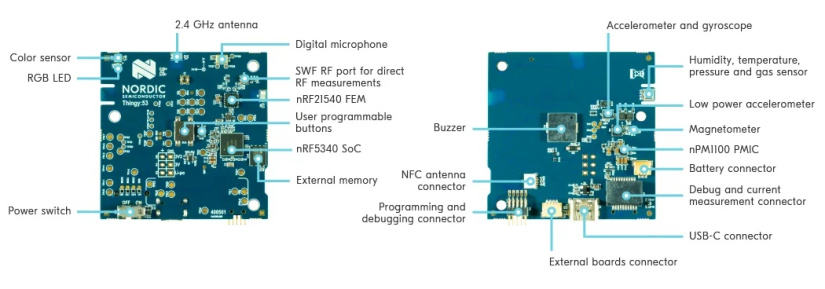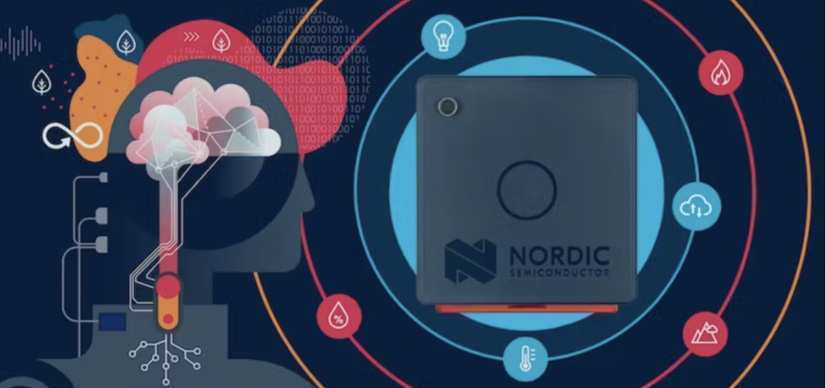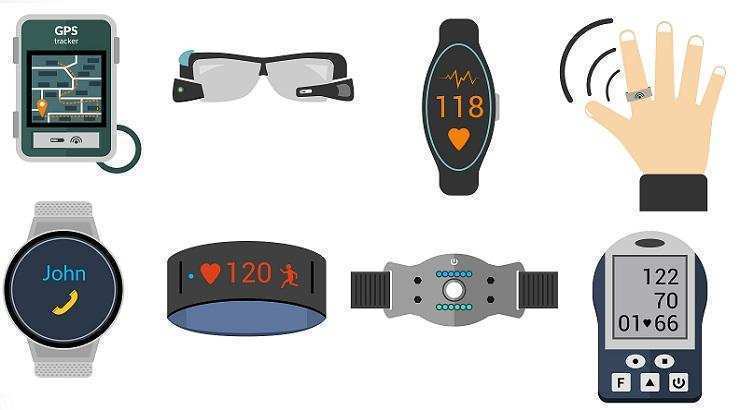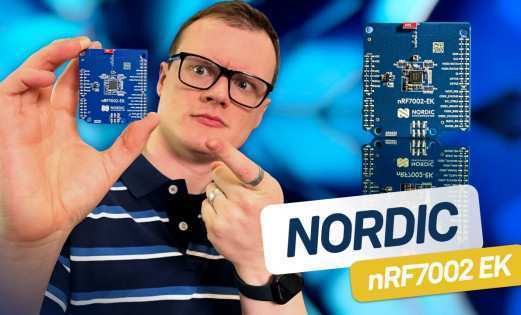Nordic Thingy:53: The Leading IoT Prototyping Platform with Machine Learning
Want to win a Thingy:53? Check out the latest Electromaker YouTube show to find out how to enter!
The Nordic Thingy:53 is a multi-protocol IoT prototyping platform developed by Nordic Semiconductor that is based on their flagship product, the nRF5340. Housed in a silicon protective case, the Thingy:53 is in many ways more ideal for makers looking to develop wireless sensor projects at speed than other DKs due to the inclusion of sensors, batteries, and other peripherals you could need in a single product.
Furthermore, the protective design means that you are far less likely to damage something (honestly, I’m not allowed nice things because I break everything), and can even be used directly in outdoor environments for testing.
Why is the Thingy:53 awesome?
Now, looking at the Thingy:53, we can instantly see why this “thing” is quite brilliant. As I just said, the silicon protective case is great for someone who is heavy-handed, or when you just need something a bit more durable.
The integration of low-power Bluetooth, battery, and sensors also makes this awesome for rapid prototyping. The Thingy:53 is fully supported in the feature-rich nRF Connect SDK. To get started, the Thingy:53 is supported by the nRF Connect SDK Fundamentals course in the Nordic Developer Academy as well as in Nordic development tools, all of which are free, and containing examples and tutorials. So, you will never be short of resources when using this device.
Features and specs of the Thingy:53
At the heart of the Thingy:53 is the nRF5340 SoC, a dual-core ARM processor that packs plenty of capabilities, supporting low-energy Bluetooth, Bluetooth mesh, thread, and ZigBee. Now, for those who closely follow our content, you’ll know that we covered the nRF5340 in a previous episode product of the week, the Nordic nRF5340 Audio DK. So, if you want to learn more about this SoC, either head over to the official Nordic site, or instead, watch the Audio DK episode here.
The Thingy:53 integrates a multitude of different devices including a low-power accelerometer, secondary accelerator and gyroscope, humidity, temperature, pressure, and gas sensor, nPM1100 power management IC, NFC antenna connector, buzzer, and extra on-board flash memory. The Thingy:53 also includes a color sensor, RGB LED, magnetometer, and digital microphone which, when listing all of that out, makes you realize this thing has a stupendous amount of potential.

But it doesn’t end there! An integrated battery charger allows for external charging via a USB-C connector (the best type of USB connector!), and this is important as the Thingy:53 has been designed with portable low-energy devices in mind. Finally, a series of programming and debugging connectors along with current measurement pins gives you everything you could possibly need to develop low-energy Bluetooth projects.
Software support for the Thingy:53
When it comes to software support, the Thingy:53 is not only supported by Nordic's rich environment of SDKs, training resources, and code examples (such as the Developer Academy), but it is also ideal for embedded machine learning applications, something that is undoubtedly becoming important in modern electronics.
What projects can you do with the Thingy:53?
With its range of onboard sensors, Bluetooth capabilities, and powerful dual-core processor, the Thingy:53 has numerous applications across all areas of engineering. Arguably, one of the most ideal projects for the Thingy:53 is as an environmental monitor. The onboard humidity, temperature, pressure, and gas sensors allow for detailed analysis of the surrounding air, while the Bluetooth mesh capabilities allow for data to be transmitted across a mesh of Bluetooth devices until ending up at a bridge device capable of taking that data and streaming it to a cloud service.

Another potential project that the Thingy:53 would be ideal in is wearable devices. The low-energy nature of the nRF5340 in combination with its small size make it a suitable SoC for wearables, and the Thingy:53 gives you all the peripherals you could need for developing such a product. In fact, as Nordic SoCs are designed for commercial use, the Thingy:53 is excellent for getting a proof of concept working in code and on some basic hardware before moving onto a dedicated PCB.

The Thingy:53 can also be used in predictive maintenance applications, whereby a device is attached to something of importance such as a piece of machinery or vehicle, and then machine learning is used to try and predict if something is going wrong. For example, a large CNC used to cut metal will have a very large, and expensive, router that needs frequent maintenance to prevent damage.
However, while routine maintenance can fix the majority of issues, it is still possible that unknown factors can result in early degradation of the router. Thus, a Thingy:53 being used to monitor vibration and sound can look for unusual changes in readings by taking that sensor data and feeding into a machine learning algorithm.
And Finally...
To summarise, the Thingy:53 is an excellent development platform for the nRF5340 SoC. It’s low energy capabilities make it ideal for long-term battery operation, while its array of sensors and peripherals provides you with everything you could possibly need to develop portable devices. Finally, the powerful SDK provided by Nordic along with their Developer Academy will get you programming in no time in everyone’s favorite IDE, Visual Studio Code (really, it is a work of art!).














































Leave your feedback...